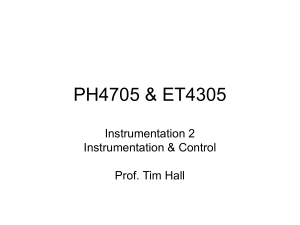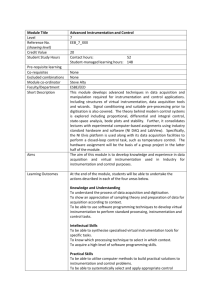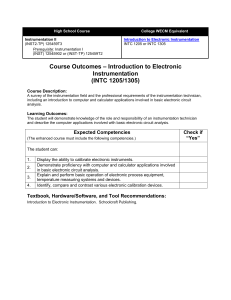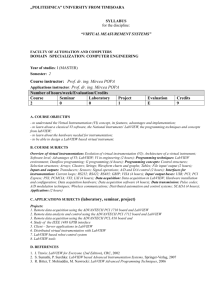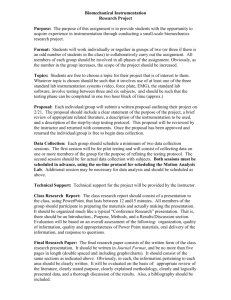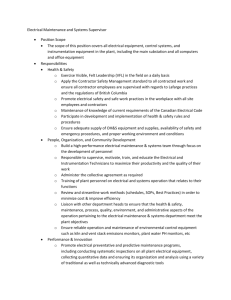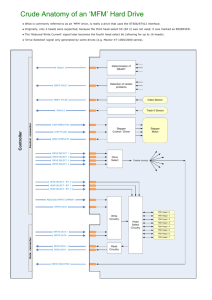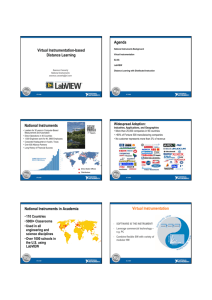IDL_newsletter_winte..
advertisement
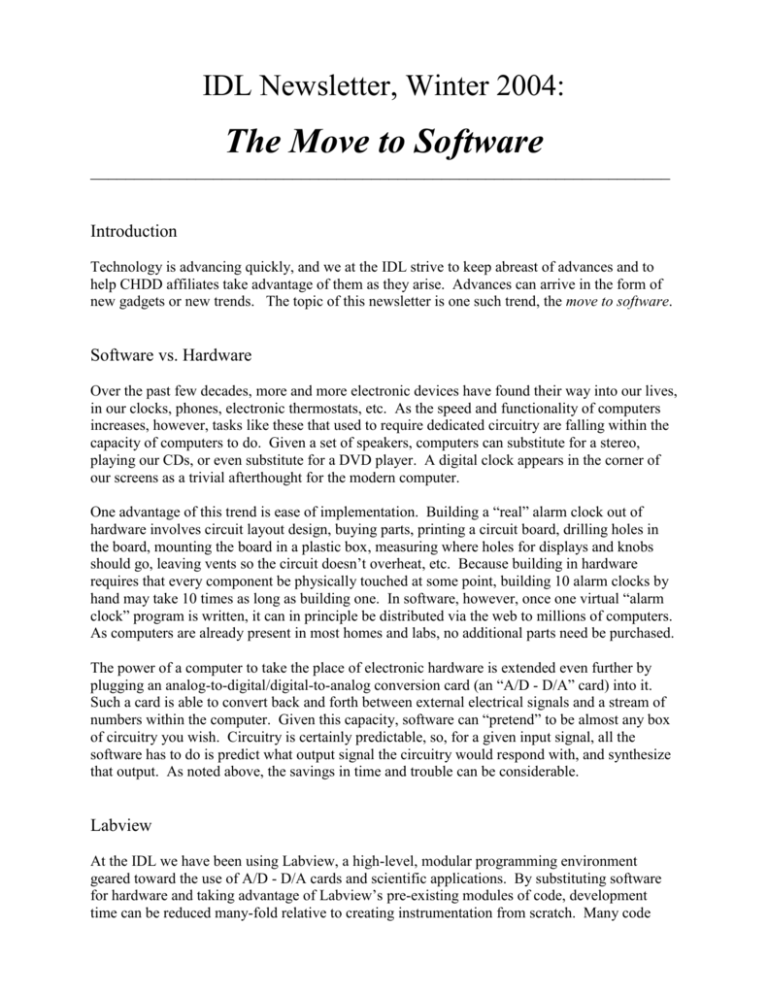
IDL Newsletter, Winter 2004: The Move to Software __________________________________________________________________ Introduction Technology is advancing quickly, and we at the IDL strive to keep abreast of advances and to help CHDD affiliates take advantage of them as they arise. Advances can arrive in the form of new gadgets or new trends. The topic of this newsletter is one such trend, the move to software. Software vs. Hardware Over the past few decades, more and more electronic devices have found their way into our lives, in our clocks, phones, electronic thermostats, etc. As the speed and functionality of computers increases, however, tasks like these that used to require dedicated circuitry are falling within the capacity of computers to do. Given a set of speakers, computers can substitute for a stereo, playing our CDs, or even substitute for a DVD player. A digital clock appears in the corner of our screens as a trivial afterthought for the modern computer. One advantage of this trend is ease of implementation. Building a “real” alarm clock out of hardware involves circuit layout design, buying parts, printing a circuit board, drilling holes in the board, mounting the board in a plastic box, measuring where holes for displays and knobs should go, leaving vents so the circuit doesn’t overheat, etc. Because building in hardware requires that every component be physically touched at some point, building 10 alarm clocks by hand may take 10 times as long as building one. In software, however, once one virtual “alarm clock” program is written, it can in principle be distributed via the web to millions of computers. As computers are already present in most homes and labs, no additional parts need be purchased. The power of a computer to take the place of electronic hardware is extended even further by plugging an analog-to-digital/digital-to-analog conversion card (an “A/D - D/A” card) into it. Such a card is able to convert back and forth between external electrical signals and a stream of numbers within the computer. Given this capacity, software can “pretend” to be almost any box of circuitry you wish. Circuitry is certainly predictable, so, for a given input signal, all the software has to do is predict what output signal the circuitry would respond with, and synthesize that output. As noted above, the savings in time and trouble can be considerable. Labview At the IDL we have been using Labview, a high-level, modular programming environment geared toward the use of A/D - D/A cards and scientific applications. By substituting software for hardware and taking advantage of Labview’s pre-existing modules of code, development time can be reduced many-fold relative to creating instrumentation from scratch. Many code modules are available, including code for acquiring data, playing sounds, interfacing to Access, signal processing, etc. There have been instances where we have produced programs for somewhat sophisticated data acquisition in under an hour. Because of the interchangability of software and instrumentation, Labview programs are also called “virtual instruments”. A demonstration virtual instrument is shown at right. By clicking on a palette of controls and indicators, a guage and knob were placed on the virtual instrument. With a few more selections, the controls were associated with real, physical inputs and outputs. A calibration factor was even placed between the input and the guage, all within less than 30 seconds of “programming”. Modifications are as trivial as cutting and pasting. A hardware replacement case study Recently an affiliate wished to get an old, mothballed system of theirs running again. The system was designed to measure subject reaction speed, and consisted of a computer program, a button panel, and a computer-to-panel interface box. As the interface box contained an extensive amount of hand-wiring and had several ambiguously labeled connectors on its side, it appeared as though any debugging would be a daunting task. It was thus with bated breath that we turned on the power to the system and ran the program. Sure enough, it didn’t work. After a few hours of looking for obvious problems, it seemed that indeed, the tangled circuit would have to be sorted through wire by wire to find the problem, and even if we found the issue, the fragility of the circuit would be a continuing concern. We decided instead to rebuild the system from scratch, using Labview. In a few engineer-weeks, we had reproduced the system, replacing the previous sequential, DOS-window interface with a contemporary graphical interface and replacing the panel with a more elegant and flexible design. Conspicuously absent in the revamped system was the dreaded interface box and tangle of wiring. The old hardware was subsumed into the software and an A/D - D/A card. The result is a panel with electronics simple enough to describe in a short e-mail, and a program that can be attached to that e-mail. Come by early and often Our time is free of charge to CHDD affiliates. In addition to providing specific technical support and instrumentation for issues as they arise, with three Ph.D.s on staff, we are in a position to offer more global consultation regarding the interplay of instrumentation and experimental design. Whether your instrumentation needs are immediate or just an idea you’re toying with, we invite you to come by and chat.

